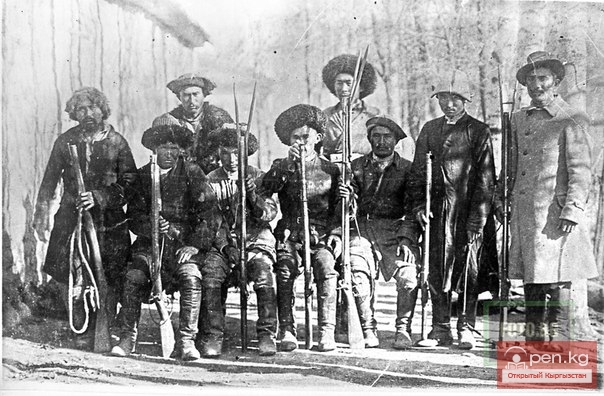
Historical information about the size of the multi-ethnic population of the Fergana Valley during the Kokand Khanate is very scarce. We will use the information provided by the orientalist A. Kun. According to the author's estimates, based on oral information from Kokand officials, in the 1870s, there were 132,000 families of settled people and 60,000 families of nomadic people living in the Fergana Valley. This amounts to 960,000 people. Considering that the nomads in the 1870s were mainly composed of Kyrgyz and a small number of Kipchaks, we can roughly estimate the Kyrgyz population in southern Kyrgyzstan to be about 350,000 to 400,000 people, and the same number in the north.
It is difficult to speak of the exact number of the indigenous population of Kyrgyzstan during the colonial period, but approximate estimates can still be provided. According to historians' calculations, based on scattered sources, there were more than 800,000 Kyrgyz in total.
The ethnic composition of the Kyrgyz population during the colonial period changed significantly due to the resettlement process (Russians, Ukrainians, and Germans from the territories of Russia, Dungans, and Uyghurs from the Kashgar oasis). The first Russian settlement here was established in 1866 near the Tokmak fortress by migrants from Siberian provinces and the European part of Russia. In 1867, the village of Lebedinovskoye was founded near the city of Pishpek (Bishkek), where 40 people settled. The resettlement movement developed gradually. By the 1870s, a number of villages had already emerged along military and trade routes: from the Talas Valley along the Chui tract to the Issyk-Kul basin. The establishment of Russian settlements was carried out according to a strict plan. From the 1880s, the resettlement movement took on a broader character. In the early 1890s, due to crop failures and famine that affected the European part of Russia, an unprecedented wave of self-settlers flooded into Turkestan, after which the resettlement of southern Kyrgyzstan began. In 1893, the village of Pokrovskoye was established in the Osh district (modern-day Kurshab in the Uzgen district), consisting of 20 families. In 1897, three settlements were founded. In 1899, the village of Blagoveshchenskoye emerged, which marked the beginning of the colonization of the Kugart Valley.
Thus, even during the period of colonial administration, Kyrgyzstan became a multinational country. Among a population of approximately 1.5 million people, more than 60% were Kyrgyz. The second largest group were Uzbeks, followed by Russian-speaking populations, Turks, Uyghurs, Tatars, Dungans, etc.
The economic transformations associated with the conquest of Kyrgyzstan by Russia also brought changes to the social structure of the Kyrgyz people. Based on their position in society and their relationship to the means of production, the Kyrgyz were divided into two unequal social groups: feudal lords — manaps and bai; and the bukara — the working part of the population.
Large bais and manaps, as the support of the colonial authorities, were attracted to the Russian administration and appointed to positions of volost elders and biys. For their services to the Tsarist regime, the government awarded manaps military ranks and various honors. The privileged class also included biys, various officials, and mullahs. The laboring population mainly consisted of the so-called kara-bukara — the common folk. This was a poor layer of the population, having at most one or two heads of small livestock, a cow, or a horse. The poor were divided into several social groups: jakyry — the destitute, zhalchy — laborers, zhatakchy — those without horses, malaï — hired workers, mardykery — day laborers, chaiyra-kery — sharecroppers, and so on.
From among the local population and incoming entrepreneurs, a layer of commercial bourgeoisie began to gradually emerge. With the development of industry in Kyrgyzstan, a working class was formed, albeit in small numbers. Its ranks were constantly replenished by migrants and impoverished local craftsmen. In 1913, 12,600 workers were engaged in handicraft production, and 1,900 in factory-type enterprises. In total, 2,545 hired workers were employed in industrial enterprises in Kyrgyzstan in 1913. In the following years, the number of workers in large enterprises significantly increased. For example, in 1917, 1,200 skilled workers were employed in the coal mines of Kyzyl-Kiya, 1,070 in the Suluktu mines, and 200 in the construction of the Chui irrigation system. Overall, the number of workers employed in industry reached 10,000. In addition, about 20,000 laborers worked in agriculture. For the most part, these were the impoverished part of the local population, working for kulaks and bai-manaps. Thus, in 1917, there were about 30,000 representatives of the working class in Kyrgyzstan.